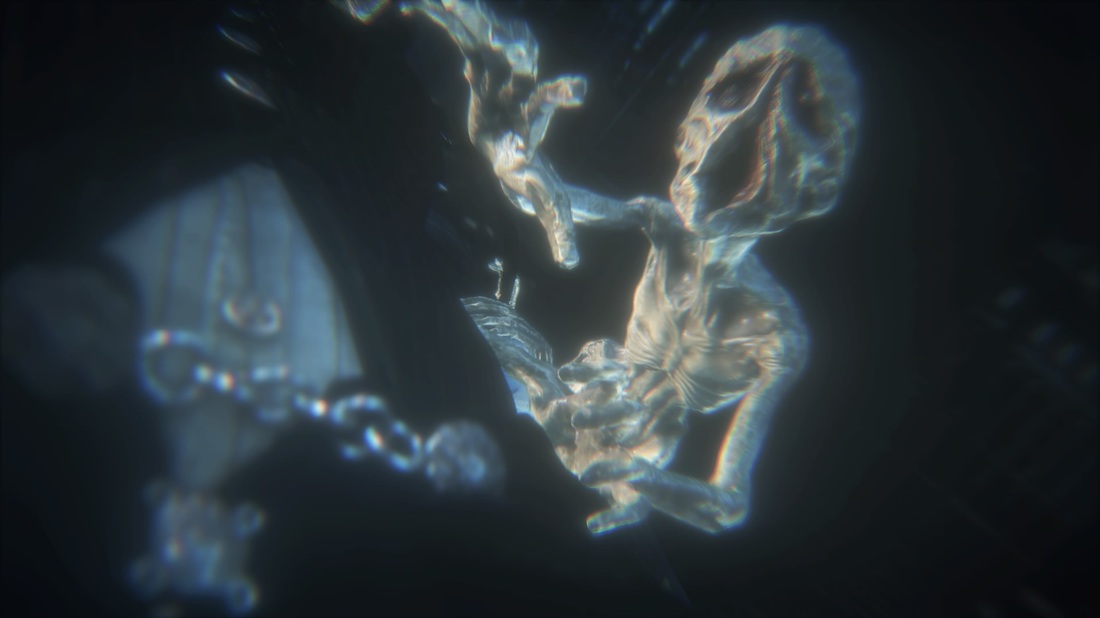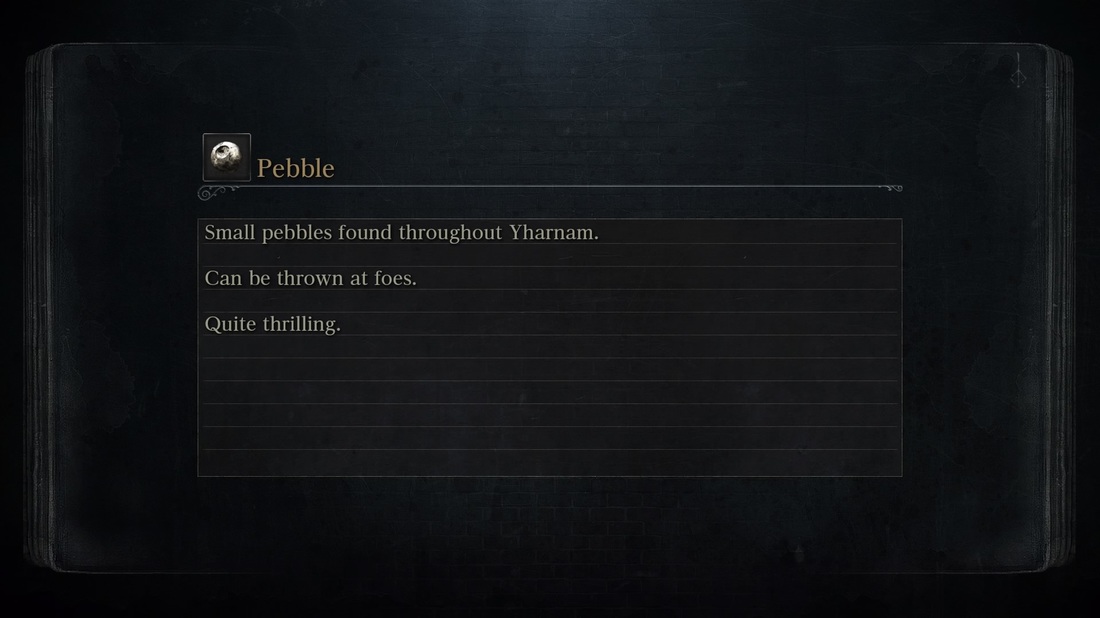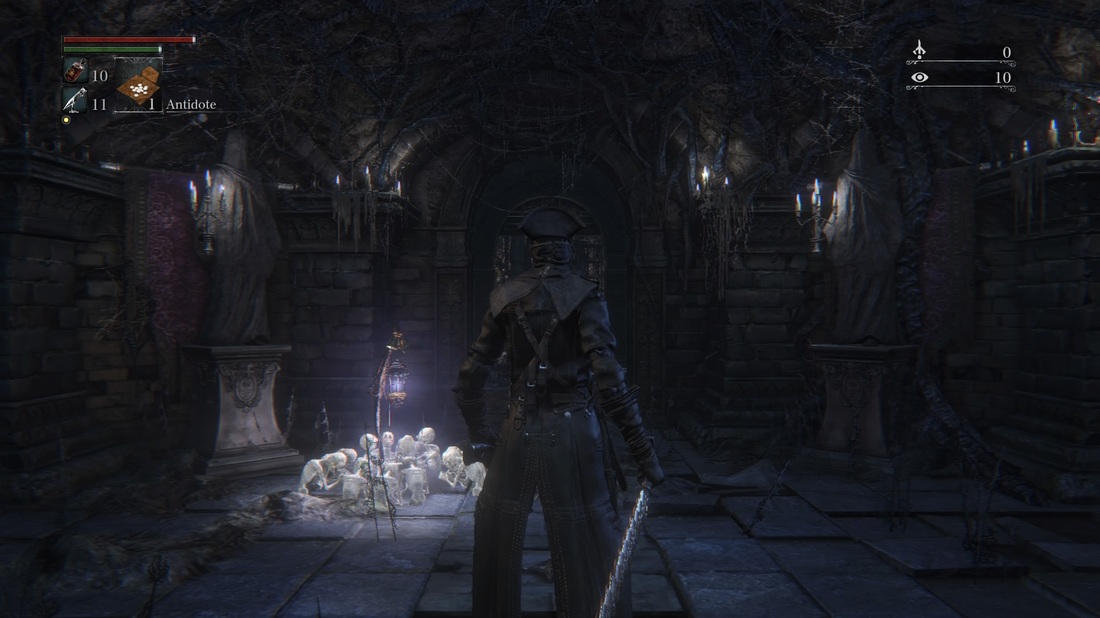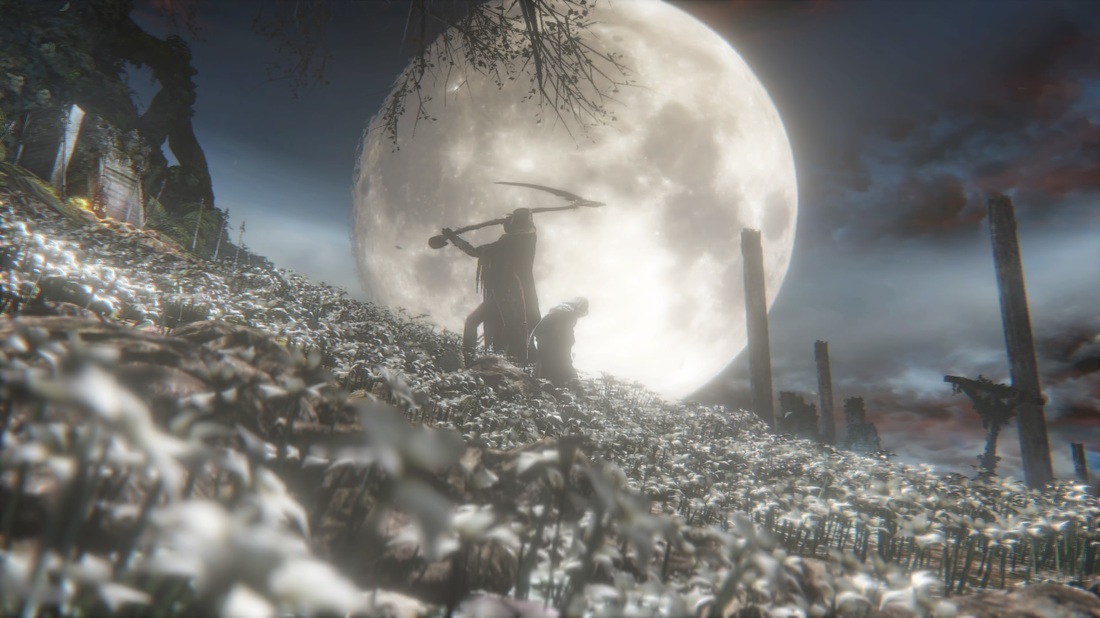|
Platform(s): PlayStation 4 Players: 1-3 I remember being super excited about Demon’s Souls after previewing it at an Anime Expo. Then it released, kicked me in the butt, and I never touched the franchise again. Recently, I decided to give Bloodborne a chance having heard it’s slightly more accessible than the Souls games. I was not left disappointed. Bloodborne is a game that rewards vigilance and adaptability while punishing stagnation and unwillingness to learn. The game is notorious for being very challenging, and you learn this the hard way from the moment you start. After character customization and a short introduction scene, you are thrown into the game with no real direction or instructions. As you play around with the controls, you start to figure out how to play. Then, before you know it, you discover some kind of wolf creature hunched over a dead body. It notices you, and you desperately try to survive, punching it with your bare hands, dealing practically no damage. Finally, it gets a slash in on you and your lie on the ground, dead, with the words ‘You Are Dead’ displayed prominently on the screen. You wake up in a strange place. Upon some exploration, you discover a weapon and then are able to go back out into the world. You will go back and die more, and then come back after catching your breath in the Hunter’s Dream. After a while, you will start to learn the ropes of the game through trial and error, figuring out methods of dodging, attack patterns and most importantly, the intricate details of how your weapon works. This is Bloodborne. It doesn’t play nice. It doesn’t hold your hand. It certainly doesn’t assume you’re an idiot. It’s a game that understands that death in a video game is inevitable, thus integrating it into the gameplay. Because of all this, it is also one of the most rewarding and satisfying experiences you will have in a game. Most of the game is rather linear, but there are enough branching paths to reward the inquisitive player. To top it off, about half of the stuff in the game is optional (and quite challenging, I might add). Speaking of exploration, I want to point out how beautiful the game is. The artistic theme is a sort of Gothic Victorian style with a surprise twist you discover about halfway through. There is a lot of detail in everything in the game, from the environment design to the creatures. In fact, the creature design is some of the most phenomenal work I’ve seen in the game. After playing for a while, I started to play for the sole reason of seeing what the next boss design would be and how it would look in motion. There are some truly horrific but mesmerizing creatures in this game. The downside is that the higher level of detail means that some textures won’t be presented in the best resolution, and if you walk around investigating the beautiful art work you will start to notice this problem here and there. It’s not a huge problem, but can sometimes pull you out of the experience for a brief moment. Still, that experience is so lovingly crafted that it’s ultimately irrelevant. This same level of love is clearly noticeable in the music and sound design. The sound effects are very distinctive and amazing, to the point that you get used to certain audio queues from creatures to indicate their presence or certain attacks. The music is a lovely supplement to all this. It is subtle, but extremely atmospheric. It pops up at all the right times, and is scarce enough to assure a strong emotional response when it is there. I especially love how the music escalates as you get further into a boss battle. It’s a great touch that creates tension during the battles. The voice acting, on the other hand, is mediocre; it isn’t terrible and it isn’t great, but it does express enough to get the point across. Which leads me to the next point: story. The story is practically non-existent. There is just enough narrative to give you a general purpose, but everything is left to innuendo, hints and inference. For a game that revolves around progression and challenging encounters, this type of approach actually complements the game quite nicely. If you take the time to read item descriptions, and pay attention to side conversations and environmental queues, you can actually gather some really fun lore within the game. That being said, this could be a turnoff to people who are looking for a game with a more enticing narrative. While many players will learn to adapt as they play more, and the game will start to get easier as you learn the mechanics, there will be some encounters that will completely obliterate you. Everyone has their own challenge, but they are there. That’s one of the beauties of this game. Each encounter plays on a certain subtle battle theme. While the battles may all start to feel really similar, it isn’t until you run into that one extremely hard boss that you realize that the subtle differences play specifically to player nuance. It’s extremely clever how this is implemented and I really appreciate how creative the developers were in doing this. For those challenging moments you can call on the help of other players. The multiplayer component is handled strangely, but it works. As you discover locations or defeat bosses, you gain a currency called ‘Insight’. This can be used to purchase special items or to call on the help of players. It’s nice because it forces the player to put a high value on cooperation, only using it when absolutely necessary. This may seem ridiculous, but there is enough Insight provided through normal gameplay to allow for a comfortable amount of co-op play without making you feel like you’re dipping into important reserves. The real problem comes in calling on specific players. It’s not hard, but it’s an extra step that can be irritating. You put a password on your game and the other player has to have the same password input on top of being in the same general vicinity. It works, but seems a bit roundabout. When you’re feeling particularly daring, you can actually invade another (random) player’s game and hunt them down to defeat them in battle. These battles can be fun or frustrating, depending on your mood and skill. In the game, there are two areas that actually force player vs player action (one optional and one required), which can be disconcerting. This can be solved by either playing the game in offline mode or finding a certain enemy (who doesn’t respawn when killed) who summons other players. If you end up doing side quests, you can get a potentially unlimited number of Insight. The main way to do this would be through a part of the game called Chalice Dungeons. As you progress through the game, you will get an item that requires ritual materials to create an instanced dungeon. These dungeons are designed to be done cooperatively, but can be done solo with some wit and skill. The dungeons all follow the same pattern of traversing through a random set of pre-made rooms connected together. After you do 2 or 3 of these you pretty much know what to expect from all of them, and as a result they can get painfully repetitive, since you need to complete about 10 different ones to reach the final boss for the Chalice Dungeons. On the bright side, almost every type of dungeon only has 3 floors, so you can usually finish one or two in one sitting depending on your skill and how long your session is. The real fun, though, is in the bosses. Some of the most challenging and exciting bosses in the game are contained within these dungeons. Some of them are varied versions of main game bosses, others are beefed up versions of normal enemies and a few are completely new and original bosses. The amazingly varied and creative bosses are the main draw in this game when it really boils down to it, and there are tons to experience throughout the game. The only real issue with approaching all these bosses is the camera. The way it responds to collision can be bothersome, especially when facing large bosses. Losing to a boss because of my own error is fine, but losing because the camera is working against me is not. Luckily, these frustrating moments don’t happen too often. Completing the game will result in a New Game + which allows the player to keep all collected items (except for story-related quest items), all upgrades and the character level and stats. The game will be more challenging every time you start an NG+ though, so be warned. Chalice Dungeons don’t scale with each NG+, so if you find a particular dungeon extremely challenging, coming back to it in a NG+ may prove fruitful. That being said, with about 85 hours of total gameplay time, I was able to get all trophies and attain level 160 (the limit being in the 500’s) on a single play through. So don’t feel pressured into completing the game and doing a NG+ to collect all items, it may be possible to do it in one go, if that’s what you’d prefer. Bloodborne is not the kind of game that is designed for the casual gamer or the gamer who is looking for a more cinematic experience. It’s the type of action/RPG that tests your skill, patience and determination. The results of these tests are immense bouts of satisfaction. For that reason alone, I can easily recommend this game, despite its flaws. It reminds me of what gaming used to be like as a child: a satisfying challenge that doesn’t assume the player is dumb. - Teepu Gameplay: AMAZING Graphics: AMAZING Sound: AMAZING Value: PERFECT OVERALL: AMAZING Screenshot Gallery |
Search
Contributors◆ Angie
◆ Emily ◆ J.D. ◆ Janette ◆ JT ◆ Manuel ◆ Nestor ◆ Rose ◆ Sylvia ◆ Teepu ◆ Tiffany ◆ Winfield Archives
March 2025
|
© 2014-2025 A-to-J Connections. All Rights Reserved.








 RSS Feed
RSS Feed